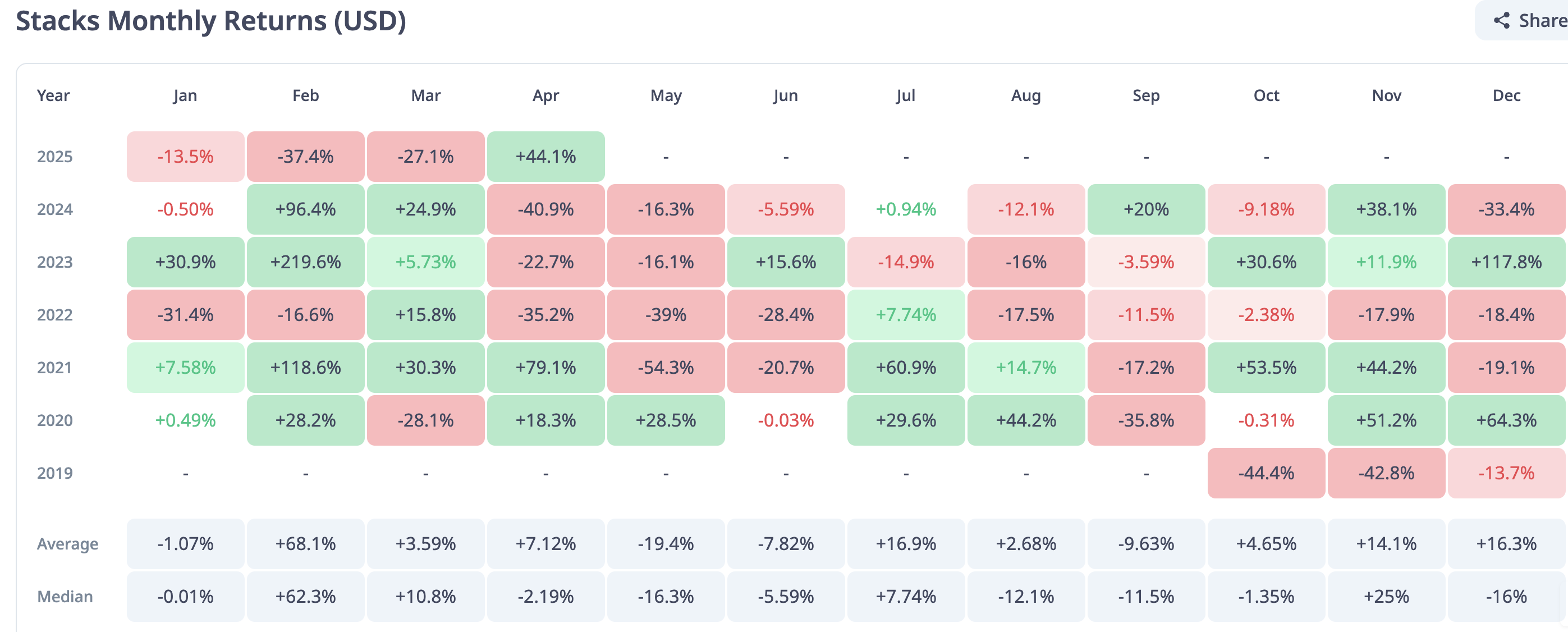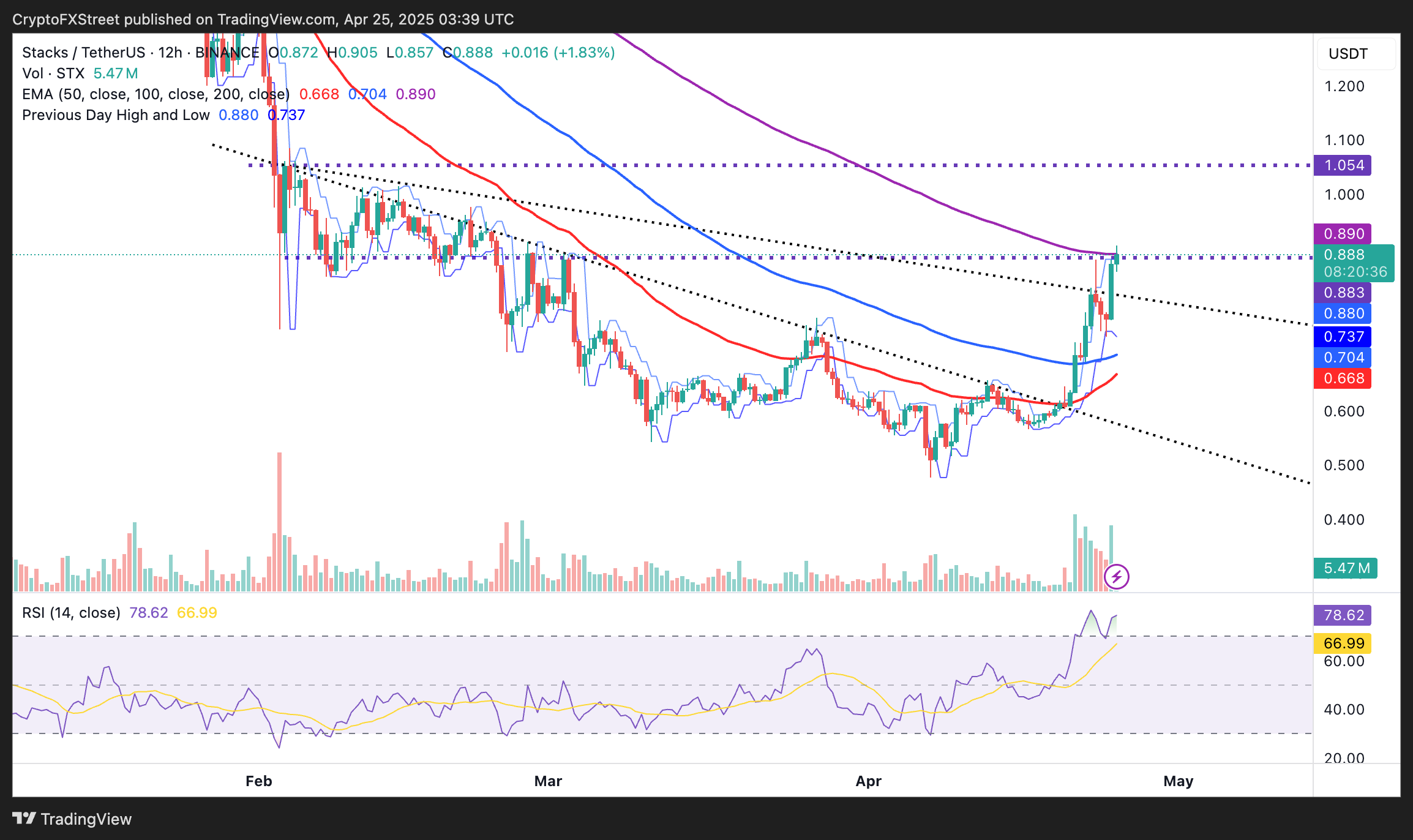Stacks price eyes $1 amid growing interest in Bitcoin layer-2 protocols' DeFi ecosystems
- Stacks price accelerated its uptrend and retested the $0.90 resistance, fuelled by growing institutional interest.
- Stacks stablecoins market capitalization increased over 400%, becoming the third-largest chain in the Bitcoin ecosystem.
- The derivatives' Open Interest surged to $73 million and a 54% increase in the volume signals growing confidence.
Stacks (STX) price rises, hitting a new weekly high at $0.90 during the Asian session on Friday. The Bitcoin layer-2 protocol shows bullish resilience, trading at $0.88 at the time of writing, reflecting growing institutional interest in the decentralized finance (DeFi) ecosystem. STX's breakout appears strong enough to sustain the uptrend, targeting highs above $1.00 in the coming days.
Stacks uptrend steady as liquidity accelerates the DeFi ecosystem
Bitcoin sidechains have been performing impressively in the last few weeks, led by Stacks, the largest chain in the ecosystem. STX value is up more than 80% since its April low of $0.47, mirroring a broader bullish sentiment in the cryptocurrency market, which saw Bitcoin briefly return above $94,000 on Wednesday.
Based on on-chain data shared by the Stacks team on X, the growth in the price of STX can be attributed to investor interest in DeFi products, among other key factors.
For instance, the protocol's stablecoins market capitalization surged by more than 400% to nearly $6 million. As the chart below shows, Stacks is the third-largest protocol in this sector behind Cronos and Morph.

Stacks stablecoin market capitalization : Source: CryptoRank
Institutional interest in the Bitcoin ecosystem continues to fuel Stacks' growth, supported by significant developments like Grayscale launching the STX Trust Fund. Select cryptocurrency exchanges such as crypto.com currently offer STX staking, allowing investors to lock their tokens to earn rewards. The increase in staking balance suggests investor confidence is growing amid heightened market activity.
Stacks is back in the green based on monthly returns data compiled by CryptoRank. After recording declines in the first three months: -13.5% in January, -37.4% in February and -27.1% in March, Stacks returns in April stand at more than 44%, breaking a pattern of negative returns observed in the same month for three consecutive years.

Stacks monthly returns (USD) | Source: CryptoRank
The derivatives market reinforces STX's growth, with Open Interest (OI) increasing 25.63% to $73.26 million in the last 24 hours. Subsequently, the surge in the volume by 54.4% to approximately $283 million could confirm the heightened market activity and trader confidence in the token.

Stacks derivatives data | Source | Coinglass
Stacks price jumps, closing in on $1
Stacks' price hovers at $0.88 at the time of writing, as bulls battle resistance at $0.90, highlighted by the 12-hour 200 Exponential Moving Average (EMA). An upward-moving Relative Strength Index (RSI) indicator overbought at 78.56 signals strong bullish momentum. This bullish outlook and rising trading volume uphold STX's potential to climb above the next crucial resistance at $1.00.

STX/USDT 12-hour chart
The broader sentiment in the cryptocurrency market is expected to remain positive on Friday, bolstered by Bitcoin's move above $93,000. However, the overbought conditions, especially for STX, could slow the uptrend, possibly resulting in a reversal ahead of the weekend. Hence, traders could keep key levels such as the green dotted descending trendline, the 100 EMA at $0.70, and the 50 EMA at $0.66 in mind as potential support areas in case of a larger retracement.
Cryptocurrency prices FAQs
Token launches influence demand and adoption among market participants. Listings on crypto exchanges deepen the liquidity for an asset and add new participants to an asset’s network. This is typically bullish for a digital asset.
A hack is an event in which an attacker captures a large volume of the asset from a DeFi bridge or hot wallet of an exchange or any other crypto platform via exploits, bugs or other methods. The exploiter then transfers these tokens out of the exchange platforms to ultimately sell or swap the assets for other cryptocurrencies or stablecoins. Such events often involve an en masse panic triggering a sell-off in the affected assets.
Macroeconomic events like the US Federal Reserve’s decision on interest rates influence crypto assets mainly through the direct impact they have on the US Dollar. An increase in interest rate typically negatively influences Bitcoin and altcoin prices, and vice versa. If the US Dollar index declines, risk assets and associated leverage for trading gets cheaper, in turn driving crypto prices higher.
Halvings are typically considered bullish events as they slash the block reward in half for miners, constricting the supply of the asset. At consistent demand if the supply reduces, the asset’s price climbs.

